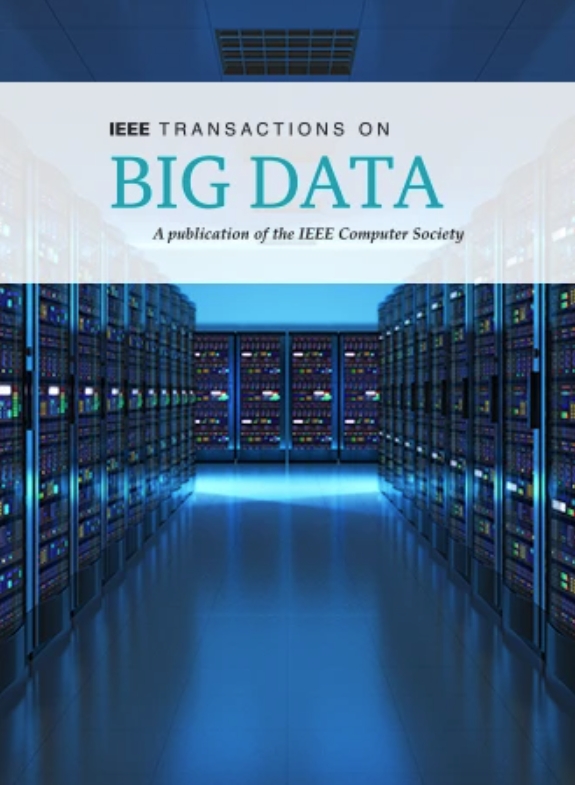时空大数据分析生态系统调查:资源管理、处理平台和应用
IF 5.7
3区 计算机科学
Q1 COMPUTER SCIENCE, INFORMATION SYSTEMS
引用次数: 0
摘要
随着互联网、物联网(IoT)和地理信息系统(GIS)的快速发展,时空大数据(STBD)正在经历指数级增长,标志着 STBD 时代的到来。近期的研究集中于开发时空大数据的收集、管理、存储、处理、分析和可视化算法和技术。研究人员通过增强 STBD 处理技术、创建新型系统以及将时空支持集成到现有系统中,取得了重大进展。然而,这些研究往往忽视了资源管理和系统优化,而这正是提高 STBD 处理和应用效率的关键因素。此外,STBD 向创新的云-边-端统一计算系统的过渡也需要引起注意。在本研究中,我们全面探讨了 STBD 分析系统的整个生态系统。我们划分了 STBD 分析生态系统,并将用于处理 GIS 数据的技术分为五个模块:STBD、计算资源、处理平台、资源管理和应用。具体而言,我们将 STBD 及其应用细分为面向地理科学的应用和面向人类社会活动的应用。在处理平台模块中,我们进一步将其分为数据管理层(DBMS-GIS)、数据处理层(BigData-GIS)、数据分析层(AI-GIS)和云原生层(Cloud-GIS)。资源管理模块和处理平台中的各层分为三类:面向任务的、面向资源的和基于云的。最后,我们提出了未来可能发展的研究议程。本文章由计算机程序翻译,如有差异,请以英文原文为准。
A Survey on Spatio-Temporal Big Data Analytics Ecosystem: Resource Management, Processing Platform, and Applications
With the rapid evolution of the Internet, Internet of Things (IoT), and geographic information systems (GIS), spatio-temporal Big Data (STBD) is experiencing exponential growth, marking the onset of the STBD era. Recent studies have concentrated on developing algorithms and techniques for the collection, management, storage, processing, analysis, and visualization of STBD. Researchers have made significant advancements by enhancing STBD handling techniques, creating novel systems, and integrating spatio-temporal support into existing systems. However, these studies often neglect resource management and system optimization, crucial factors for enhancing the efficiency of STBD processing and applications. Additionally, the transition of STBD to the innovative Cloud-Edge-End unified computing system needs to be noticed. In this survey, we comprehensively explore the entire ecosystem of STBD analytics systems. We delineate the STBD analytics ecosystem and categorize the technologies used to process GIS data into five modules: STBD, computation resources, processing platform, resource management, and applications. Specifically, we subdivide STBD and its applications into geoscience-oriented and human-social activity-oriented. Within the processing platform module, we further categorize it into the data management layer (DBMS-GIS), data processing layer (BigData-GIS), data analysis layer (AI-GIS), and cloud native layer (Cloud-GIS). The resource management module and each layer in the processing platform are classified into three categories: task-oriented, resource-oriented, and cloud-based. Finally, we propose research agendas for potential future developments.
求助全文
通过发布文献求助,成功后即可免费获取论文全文。
去求助
来源期刊

IEEE Transactions on Big Data
Multiple-
CiteScore
11.80
自引率
2.80%
发文量
114
期刊介绍:
The IEEE Transactions on Big Data publishes peer-reviewed articles focusing on big data. These articles present innovative research ideas and application results across disciplines, including novel theories, algorithms, and applications. Research areas cover a wide range, such as big data analytics, visualization, curation, management, semantics, infrastructure, standards, performance analysis, intelligence extraction, scientific discovery, security, privacy, and legal issues specific to big data. The journal also prioritizes applications of big data in fields generating massive datasets.
 求助内容:
求助内容: 应助结果提醒方式:
应助结果提醒方式:


